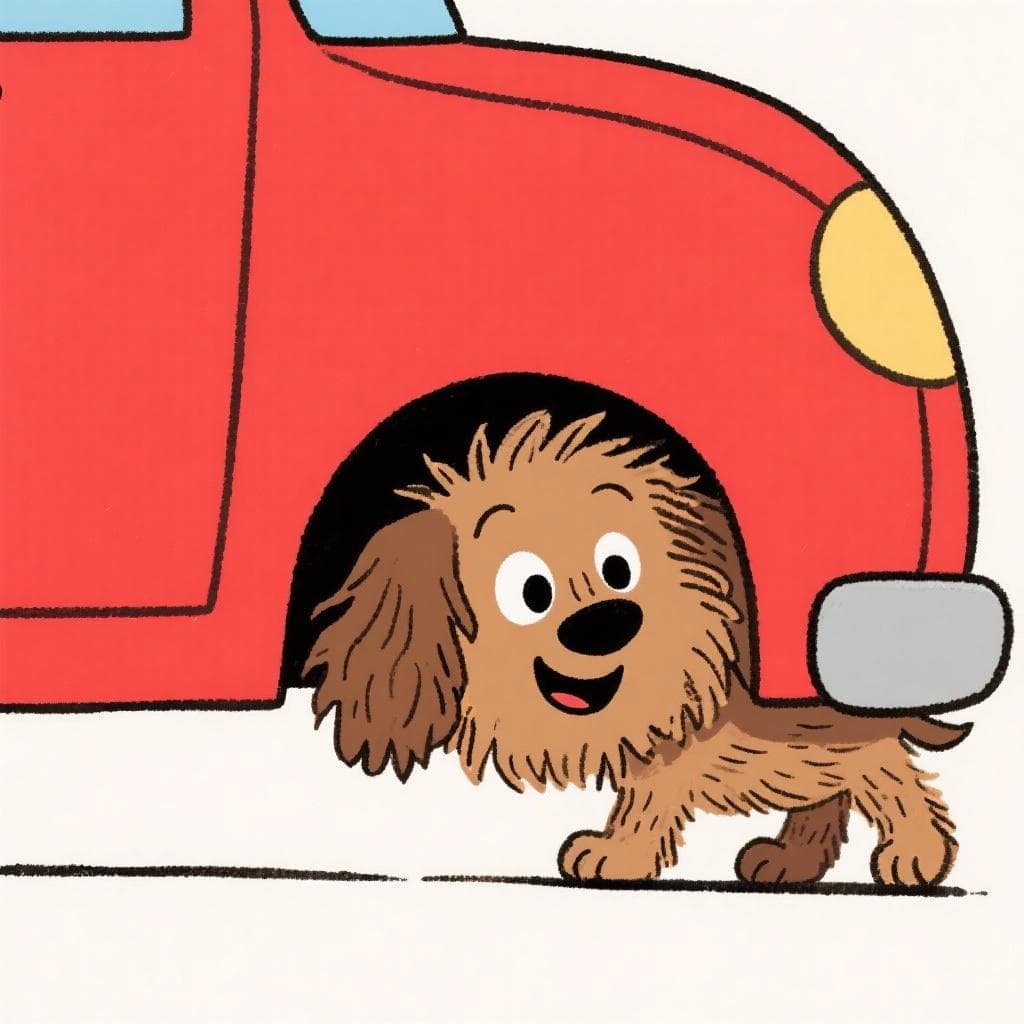Había un perro debajo de un carro.
a-BÍ-a un PE-rro de-BA-jo de un CA-rro
There was a dog under a car.
🔊 Listen & Practice
Start with slow speed to master pronunciation, then gradually increase to challenge yourself.
🎨 Visualization

This dog is practicing its 'rr' and 'r' sounds under the car!
🎯 Pronunciation Focus
The Rolled 'rr' (vibrante múltiple)
/r/This is the classic trilled 'rr' sound in 'perro'. To make it, relax the tip of your tongue and let it vibrate against the roof of your mouth as you push air out. It's the key sound that separates 'perro' (dog) from 'pero' (but).
The Tap 'r' (vibrante simple)
/ɾ/This is the single, quick tap of the tongue against the roof of your mouth in 'carro'. It's much lighter than the rolled 'rr'. Think of the 'tt' sound in the American English pronunciation of 'butter' or 'ladder'.
The Soft 'b' Sound
/β/In words like 'había' and 'debajo', the 'b' is soft when it comes after a vowel. Your lips get very close but don't seal completely, allowing a little air to pass through. It's a much softer sound than the English 'b' in 'boat'.
📝 Practice Breakdown
Start by focusing on the star of the show: the rolled 'rr' in 'perro'. Really let your tongue vibrate. Feel the strong vibration that makes it different from a single 'r'.
Now for the contrast. The 'r' in 'carro' is a quick, light tap. Say 'perro' (roll) then 'carro' (tap) back-to-back to feel the difference.
Put it all together smoothly. The goal is to make a clear, confident distinction between the two 'r' sounds without pausing.
Key Words in This Tongue Twister:
📚 Background
This is a fundamental Spanish tongue twister used to drill one of the most important and challenging sound distinctions for learners: the rolled 'rr' versus the tapped 'r'. Mastering this short phrase is a huge step towards authentic-sounding Spanish.
❌ Common Pitfalls
Using the Same 'r' for Both Words
Mistake: "Pronouncing 'perro' and 'carro' with the same 'r' sound. This is a very common mistake that can change the meaning of words (e.g., 'pero' means 'but', 'perro' means 'dog')."
Correction: Treat 'rr' and 'r' as completely different sounds. 'rr' is a motor that vibrates. The single 'r' between vowels is a quick, light tap. Practice them separately: 'rrr-rrr-rrr' and then 'da-da-da' (fast). This helps build the muscle memory.
Using an English 'r' Sound
Mistake: "Making the 'r' sound in the back of the throat, like the English 'r' in 'car' or 'run'."
Correction: Both Spanish 'r' sounds happen at the front of your mouth. The tip of your tongue should touch or vibrate against the ridge just behind your top front teeth. Keep the sound forward and light!
🌎 Where It's Used
General Spanish
This tongue twister is universally known and used across the entire Spanish-speaking world as a core pronunciation exercise.
🔗 Related Tongue Twisters
The R vs. RR Showdown
Can you say it five times in a row, getting faster each time, while keeping the 'rr' in 'perro' clearly rolled and the 'r' in 'carro' a clean tap? Record yourself and listen for the difference!
🏷️ Tags
Frequently Asked Questions
Why is the difference between 'r' and 'rr' so important in Spanish?
Because they are two distinct sounds that can completely change the meaning of a word! For example, 'caro' means 'expensive,' while 'carro' means 'car.' 'Pero' means 'but,' while 'perro' means 'dog.' Nailing this difference is key to being understood correctly.
I just can't roll my 'rr's! Is there any hope?
Absolutely! It's a physical skill that takes practice, just like learning to whistle. Be patient. Start by practicing the single tap 'r' first, making it really fast. Then, try to relax your tongue and blow air over the tip to make it vibrate. Many people find it helpful to start with a 'drrr' or 'trrr' sound. You'll get it!



